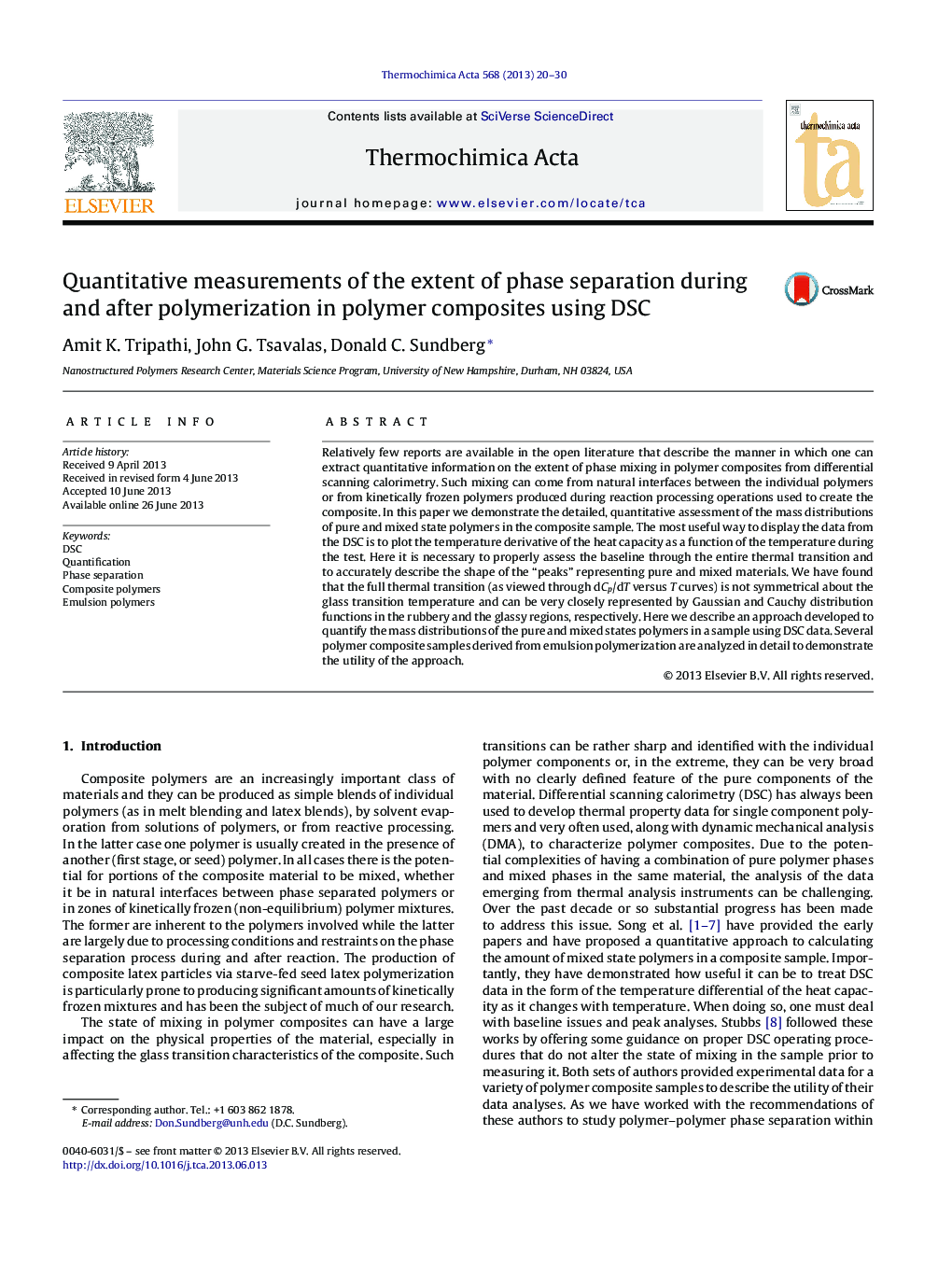| Article ID | Journal | Published Year | Pages | File Type |
|---|---|---|---|---|
| 673711 | Thermochimica Acta | 2013 | 11 Pages |
•Distributions of pure and mixed state polymers within a composite polymer sample can be quantitatively determined by DSC.•For polymers derived from reactive processing, these data can yield the extent of phase separation within the composite.•dCp/dT versus T on a DSC yields data sets that can visually and quantitatively show state of mixing in the composite polymer.•Tg transitions are not symmetrical and can be represented by a combination of Gaussian and Cauchy distribution functions.•Annealing the composite, rather than using a simple blend, properly maintains the native interface formed during reaction.
Relatively few reports are available in the open literature that describe the manner in which one can extract quantitative information on the extent of phase mixing in polymer composites from differential scanning calorimetry. Such mixing can come from natural interfaces between the individual polymers or from kinetically frozen polymers produced during reaction processing operations used to create the composite. In this paper we demonstrate the detailed, quantitative assessment of the mass distributions of pure and mixed state polymers in the composite sample. The most useful way to display the data from the DSC is to plot the temperature derivative of the heat capacity as a function of the temperature during the test. Here it is necessary to properly assess the baseline through the entire thermal transition and to accurately describe the shape of the “peaks” representing pure and mixed materials. We have found that the full thermal transition (as viewed through dCp/dT versus T curves) is not symmetrical about the glass transition temperature and can be very closely represented by Gaussian and Cauchy distribution functions in the rubbery and the glassy regions, respectively. Here we describe an approach developed to quantify the mass distributions of the pure and mixed states polymers in a sample using DSC data. Several polymer composite samples derived from emulsion polymerization are analyzed in detail to demonstrate the utility of the approach.
Graphical abstractFigure optionsDownload full-size imageDownload as PowerPoint slide
